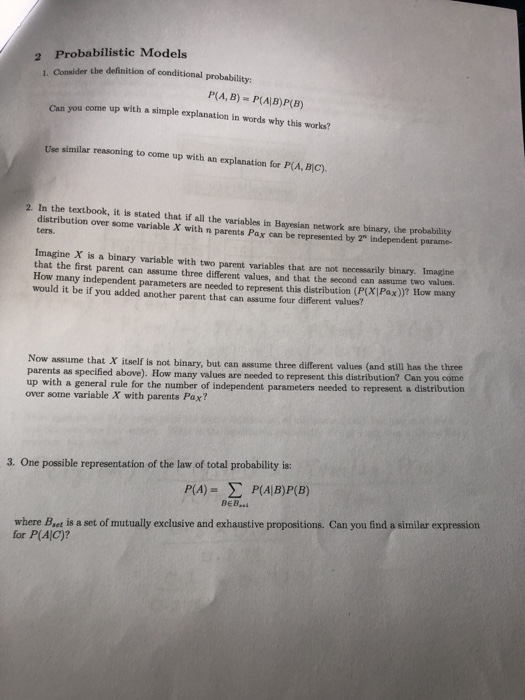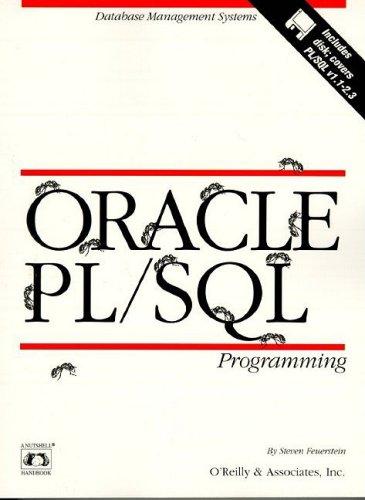2 Probabilistic Models 1. Consider the P(A, B) PAIB)P(B) Can you come up with a simple explanation in words why this works? Use similar reasoning to come up with an explanation for P(A,BC). 2. In the textbook, it is stated that if all the variables in Bayesian network are binary, the probability independent parame- distribution over some variable X with n parents Pax can be represented by 2 ters. Imagine X is a binary variable with two parent variables that are not necessarily binary. Imagine that the first parent can assume three different values, and that the second can assume two values. How many independent parameters are needed to represent this distribution (P(XIPax))? How many would it be if you added another parent that can assume four different values? the three as specified above). How many values are needed to represent this distribution? Can you come Now assume that X itself is not binary, but can assume three different values (and still has up with a general rule for the number of independent parameters needed to represent a distribution over some variable X with parents Pax? 3. One possible representation of the law of total probability is: BEB where Biet is a set of mutually exclusive and exhaustive propositions. Can you find a similar expression for P(AjC)? 2 Probabilistic Models 1. Consider the P(A, B) PAIB)P(B) Can you come up with a simple explanation in words why this works? Use similar reasoning to come up with an explanation for P(A,BC). 2. In the textbook, it is stated that if all the variables in Bayesian network are binary, the probability independent parame- distribution over some variable X with n parents Pax can be represented by 2 ters. Imagine X is a binary variable with two parent variables that are not necessarily binary. Imagine that the first parent can assume three different values, and that the second can assume two values. How many independent parameters are needed to represent this distribution (P(XIPax))? How many would it be if you added another parent that can assume four different values? the three as specified above). How many values are needed to represent this distribution? Can you come Now assume that X itself is not binary, but can assume three different values (and still has up with a general rule for the number of independent parameters needed to represent a distribution over some variable X with parents Pax? 3. One possible representation of the law of total probability is: BEB where Biet is a set of mutually exclusive and exhaustive propositions. Can you find a similar expression for P(AjC)







